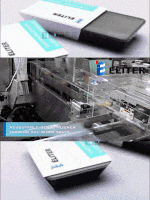Protection of Photoelectric and Capacitive Sensors
2022-12-23
How to protect photoelectric and capacitive sensors?
Supply chain and labor shortages put additional pressure on automation solutions to keep manufacturing lines running. Although sensors are designed to work in harsh environments, a good blow can misalign a sensor or even knock it out of condition. Here are some tips on how to protect photoelectric and capacitive sensors.
Mounting solutions for photoelectric sensors
Photoelectric sensors are sensitive to environmental factors that can cloud their eyesight, such as dust, debris and splashes of liquids, or damage them with physical impact. One of the best things that can be done from the beginning is to protect them by mounting them in places that keep them out of danger. Adjustable mounting solutions make it easy to install sensors a little further away from the action. Mounts that can be adjusted on three axes, such as ball joints or rod and mount combinations, must be locked firmly in position so that vibration or weight does not cause the sensors to misalign. And mounting materials such as stainless steel or plastic can be chosen to meet factors such as temperature, accessibility, susceptibility to impact and contact with other materials.
When using retroreflective sensors, reflectors and reflective sheeting need similar attention. Consider that if the application involves heat or chemicals that may come into contact with the reflectors. The reflectors come in versions, especially for use with red, white, infrared and laser lights, or especially for polarized or non-polarized light.

Taking into account the material and design of the sensors
Capacitive sensors should also be protected based on their working environment, the material they detect and the place where they are installed.
If there is contact, special attention should be paid to the material and design of the sensor. Food, beverages, chemicals, viscous substances, powders or bulk materials can degrade a sensor made of the wrong material. And to change perspective, a sensor can affect the quality of the material it comes into contact with, like changing the taste of a food product. If chemical resistance is needed, stainless steel, PTFE and PEEK housings are available.
While the material of the sensor is important for its functionality, the physical design of the sensor is also important. A working environment may involve washing processes or hygiene requirements. If that is the case, the sensor design should allow water and cleaning agents to run off easily, while hygiene requirements demand that the sensor does not have gaps or cracks where material can accumulate and harbor bacteria.
Non-contact capacitive sensors may have their own special set of requirements. They can detect material through the walls of a tank, depending on the type and thickness of the tank wall material. Plastic walls and non-metallic packaging present less of a challenge. Different shell styles (flat cylindrical, disc and block styles) have different detection capabilities.
The newest capacitive technology is designed as an adhesive tape for measuring the material inside a tank or container continuously. Available with stainless steel, plastic or PTFF housing, it works particularly well when there is little space available to detect through a plastic or glass wall of 8 mm or less.





